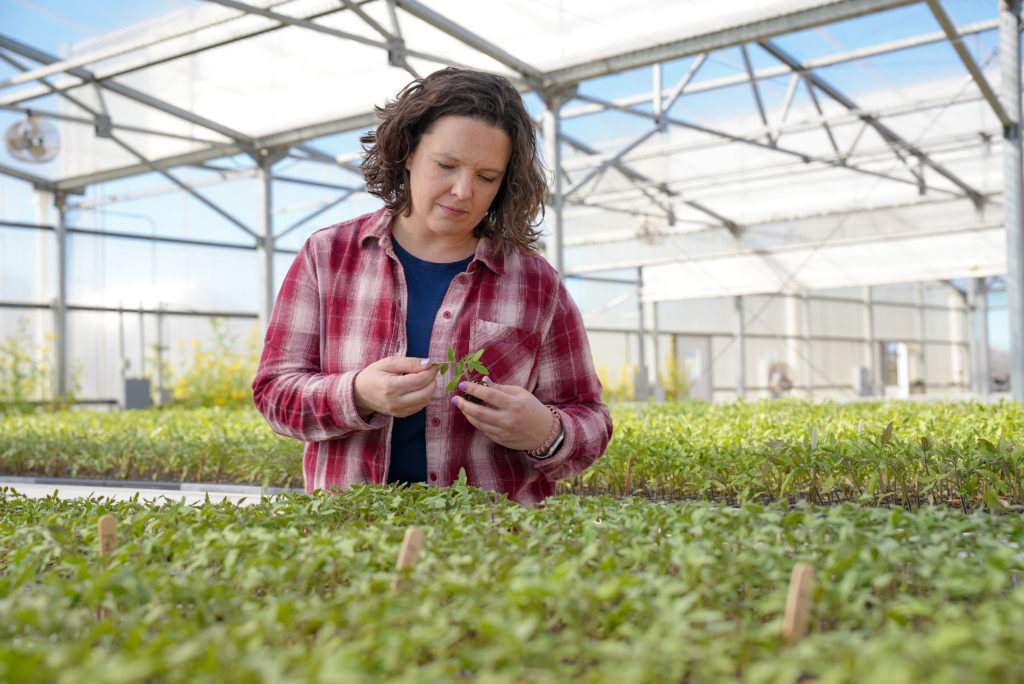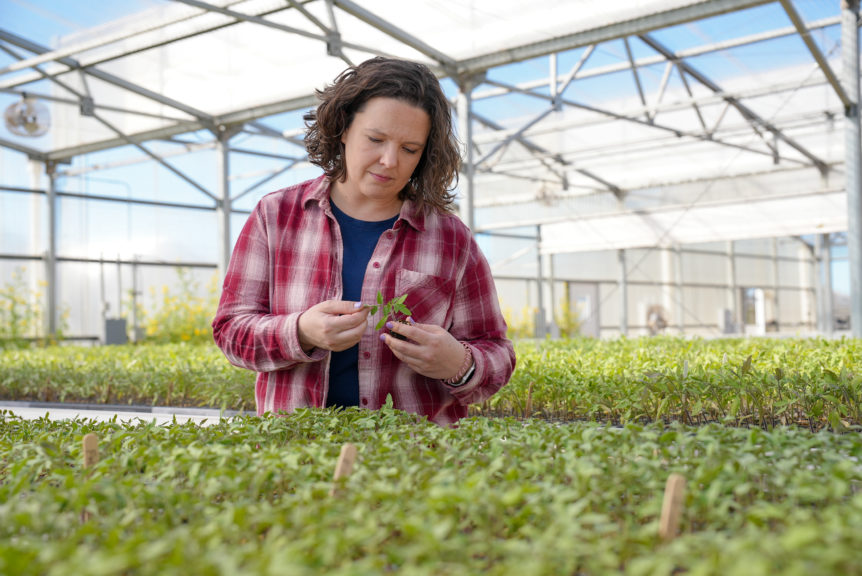
Earlier this year, Jessica Chitwood-Brown took over the lead tomato breeding post at the University of Florida Institute of Food and Agricultural Sciences (UF/IFAS) Gulf Coast Research and Education Center in Wimauma, Florida. The center has a long history of tomato breeding success.
One of her objectives is to continue the effort to breed stakeless tomatoes, which could facilitate mechanical harvest in the future. We asked her about this work and other objectives.
What are some of the major goals of developing a tomato variety that doesn’t need to be staked?
Chitwood-Brown: The long-term goal of this project is to develop tomato varieties that can be harvested by a machine. However, the short-term goals include smaller steps along that path that could help address the challenges that growers are facing related to the lack of availability and high cost of labor. For example, by growing tomato varieties that do not need to be staked, growers will save the labor costs associated with staking and tying which are currently done by hand. Next, if these varieties could then be harvested just once (still by hand, not by a machine), that could save the growers the cost of multiple harvests. This obviously must be balanced with the production of the varieties. In other words, the tomato varieties need to be high yielding and meet the required quality standards to make a once-over harvest economical.
What have been some of the more difficult challenges developing this type of variety?
Chitwood-Brown: The traits that make these plants suitable for growing without stakes impact various other critical traits in the plants, and it has taken decades of breeding to reach where we currently are. Recovering these important traits — particularly fruit size, yield and the appropriate external appearance and quality — has taken many seasons of crossing to elite tomato lines and selecting the best plants to move forward.
How many lines are you evaluating that have potential to be a stakeless variety and how do they look?
Chitwood-Brown: Tomato cultivars that are grown commercially are F1 hybrids, so my breeding program is comprised largely of parental material plus their derived F1 hybrids that we evaluate every season. This past season, in the compact-growth habit group of lines (this is the material for stakeless growing), we had around 150 lines at various stages of selection for parental material and evaluated a few dozen hybrids. We already have several hybrids that were previously released (in 2022) by my predecessor Dr. Sam Hutton. A few growers trialed them this spring. Although these lines have been released, they are not yet commercially available, which requires that they be picked up by a seed company. There are at least two new hybrids that I am hopeful I can trial on grower fields in the next few seasons, with more likely coming soon.
How would growers need to change their production system to grow stakeless tomatoes?
Chitwood-Brown: This would be a big change to the overall production system. We are working with several other researchers to establish the best production practices so we can make recommendations to growers. Based on our preliminary findings, it is likely that plant spacing and fertilizer requirements will be different. We also anticipate that bed width may have an impact on production. I hope to begin research soon to determine best pesticide application practices. Harvest timing will need to be understood to help make recommendations for the best time for planting and production throughout the season. These areas of research will ultimately involve the growers themselves, who are the experts on tomato production in their fields. I am continually grateful for their support.
Have you experimented with machine harvest of stakeless varieties?
Chitwood-Brown: We do not have a mechanical harvester yet. We hope to acquire one very soon, possibly before the end of the fall production season.
Is there anything else that you would like to add?
Chitwood-Brown: I believe, as many others have before me, that this project could help address a major challenge facing the Florida tomato industry. However, I want to be clear that stakeless production is not the only focus of my breeding program. There are many growers who are still quite skeptical of this project, and I truly understand that. My mission as a breeder is to help develop tomato cultivars that require less input (including pesticides, fertilizers, etc.) to support a more sustainable, profitable tomato production system. I will continue to do that based on the needs of the Florida tomato growers.










